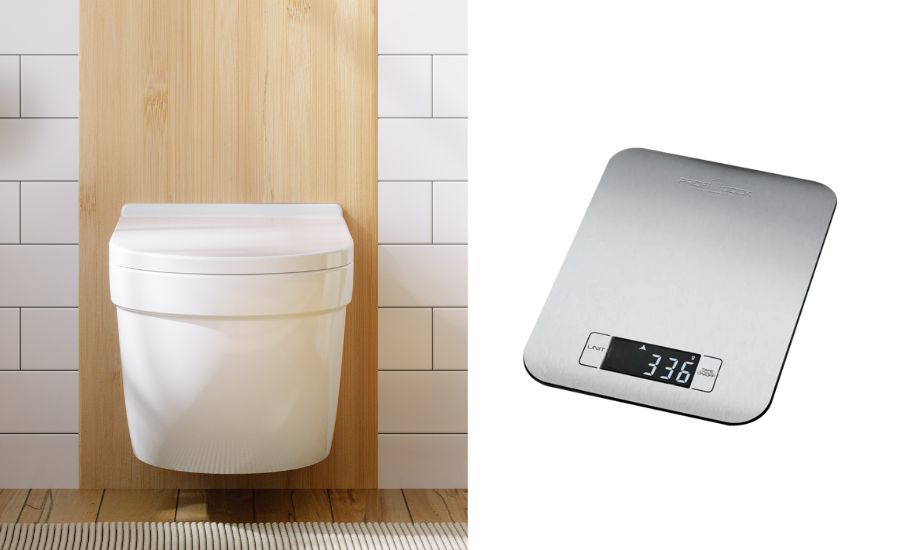Ah, the humble toilet – an often-underestimated bastion of sanctuary. How much weight can a toilet hold? Join me in unveiling the hidden truths behind a toilet weight limit, diving deep into the realm of toilet companies, standard, and wall-hung toilets.

Asking for a Friend: How Much Weight Can a Toilet Hold?
We’ve all heard the whispers regarding a toilet weight limit – from the sturdiness of wall-mounted toilets to the conventional strength of floor-mounted ones.
Knowing weight limits ensures safety, prevents damage, and maintains fixture durability for reliable, long-term use.
Hold onto your seats – pun intended – as we navigate the fine line between standard and a wall-mounted toilet weight limit. Because toilets can handle more than just our daily duties.
Factor 1. Structure – Wall-Mounted Toilet vs. Standard Toilet Weight Limit
From the average toilet weight limit to the contrasting strengths of wall-hung toilets and standard toilets, we’ll unravel the mystery of how much weight modern toilets hold.
Wall-Mounted Toilets
Wall-mounted toilet weight limit ranges from approximately 500 to 1000 pounds (227 to 454 kilograms). This toilet weight limit depends heavily on the mounting system and the structure supporting the wall-hung toilet.
The sophisticated wall-hung toilets demand a robust supporting system. The wall-hung toilet weight limits hinge significantly on secure mounting to a reinforced wall.
The integrity of the wall, its material strength, and the installation quality directly dictate the average weight capacity.
Adequate anchors, strong brackets, and following toilet manufacturer guidelines are paramount. Properly distributed weight across these anchor points ensures the wall-hung toilet weight limit is sustained without compromising safety.

Standard Floor-Mounted Toilets
Standard floor-mounted toilets usually have a weight limit between 1000 to 1500 pounds (454 to 680 kilograms).
Floor-mounted toilets rely on a different support mechanism. The average weight capacity of a normal standard toilet lies in the sturdy connection between the toilet base and the floor.
A well-sealed flange, securely anchored to the floor, distributes the weight, bolstering the stability of a standard toilet. The average weight limit here depends on the structural integrity of the floor.
Understanding these nuances plays in determining the weight limit of your new toilet, whether it’s the wall-mounted toilet or the down-to-earth classic.
Factor 2. Material
When it comes to a toilet, the choice of materials significantly influences how much weight can a toilet hold.
Porcelain and Ceramic
Ceramic and porcelain variants can sustain weight within the ranges indicated above. Renowned for their robustness and resilience, porcelain and ceramic toilets boast higher weight limits.
The structural integrity allows them to handle heavier loads, both wall-mounted and floor-mounted toilets. These materials excel in resisting scratches, stains, and wear. Their reliability lies in enduring heavier loads without compromising stability.
Plastic
Plastic toilets often have lower weight tolerances, supporting around 300 to 500 pounds (136 to 227 kilograms).
However, they still offer practicality for some applications and environments where weight limits are less of a concern.
Whether you opt for the robust porcelain, ceramic elegance, or the lightweight practicality of plastic, knowing their weight capacities ensures a fitting choice for your space.

Factor 3. Toilet Seat
How much weight does the toilet seat hold? Although not directly dictating the standard toilet weight limit, the significance of sturdy and correctly installed toilet seats should not be underestimated.
A robust average toilet seat, ideally designed for the specific toilet model, ensures a more uniform dispersion of weight.
This even distribution mitigates stress on the toilet seat, contributing significantly to its overall stability.
A securely affixed toilet seat not only enhances comfort but also plays a supportive role in maintaining the toilet’s integrity.
An elongated toilet seat, with its extended design, not only offers enhanced comfort but also contributes to better weight distribution across the toilet bowl.
While the average toilet weight limit primarily depends on the construction and material, a well-matched toilet seat undoubtedly complements these limits, fostering a more stable and reliable toilet.
Factor 4. Human Weight vs Object Weight
Understanding how much weight can a toilet hold involves distinguishing between human and object weight.
In general, toilets handle human weight more effectively than object weight. The weight limits specified by a toilet manufacturer primarily consider the weight of an average adult using the toilet.
Placing heavy objects or excessive loads on the toilet seats, such as standing or sitting on the tank or bowl, can surpass the intended toilets’ weight limits and strain the structural integrity.
Exceeding these weight limits, particularly with objects, can lead to cracks, leaks, or even damage to the toilet, risking potential accidents or malfunction.
Therefore, it’s essential to adhere to recommended weight limits and avoid placing heavy objects on the toilet to ensure its longevity and safe use.

FAQ
The weight limit for a floor-mounted toilet typically ranges between 1,000 to 1,500 pounds (454 to 680 kilograms), contingent upon the quality of installation, floor structure, and the integrity of the toilet’s flange.
Toilet flush capabilities are not determined by weight but rather by water pressure and flushing mechanisms. However, toilets are designed to efficiently handle waste without concern for specific weight limits.
Toilet carriers or in-wall toilet systems, including those for a wall-mounted toilet, vary in weight limits. On average, these carriers can support weights ranging between 500 to 1,000 pounds (227 to 454 kilograms), subject to proper installation and adherence to manufacturer guidelines.
How much weight a bathroom can hold depends on various factors such as the floor’s structural integrity, the building’s construction, and the materials used.
Generally, bathrooms are designed to support considerable weight, but it’s essential to avoid exceeding weight limits stipulated for floors, walls, and fixtures like toilets or bathtubs.
Conclusion
So how much weight can a toilet hold? Understanding is crucial for selecting the right toilet for your needs.
In the realm of toilet weight limits, understanding the nuances, from the sturdiness of the toilet bowl to the pivotal role of proper installation, underscores the importance of safety and longevity in our normal standard toilets.
The maximum weight limit, a crucial consideration often overlooked, serves as a safeguard against potential damage and hazards.
While toilet seats, often an afterthought, contribute significantly to stability and weight distribution, enhancing the overall resilience of the toilet.
In this balance between function, safety, and respect for the prescribed maximum weight limit, we find harmony in our daily interactions with popular toilet brands.


